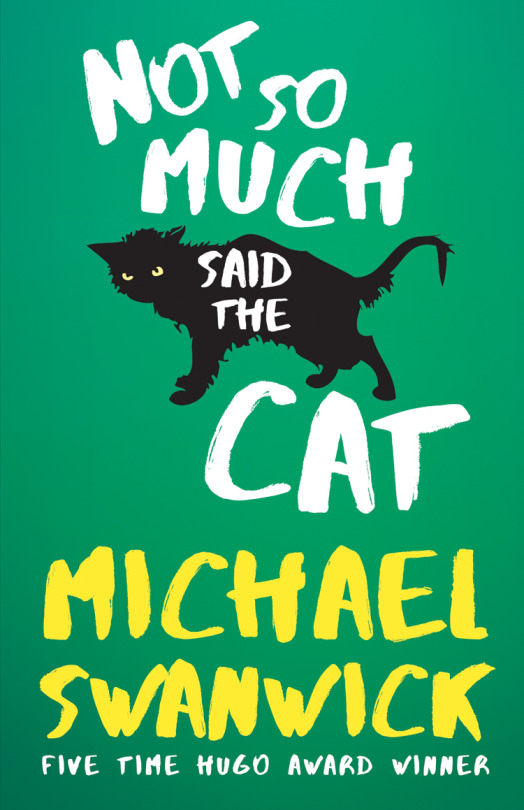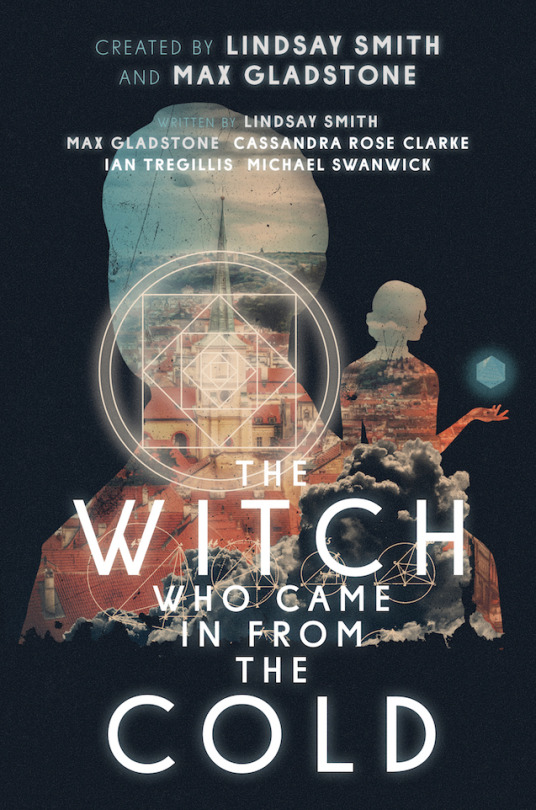NOT SO MUCH SAID THE CAT is a brilliant compilation

In FOUNDATION: THE
INTERNATIONAL REVIEW OF SCIENCE FICTION 126, Molly Cobb praises Michael Swanwick’s NOT SO MUCH SAID THE CAT.
Composed of short fiction written between 2008
and 2014, the newest collection of Michael
Swanwick’s work is a brilliant compilation of
science fiction and fantasy which centres around
a general set of themes. The stories gathered
here demonstrate the artistry and depth to which
Swanwick is capable of discussing the structure of
reality, questions of authenticity, and the nature of
humanity and its relationships. As a result of these
recurrent themes, the stories work extremely well
together and make for an excellently constructed
anthology. Though not all the fiction featured within
delves as heavily into these areas as others, together they present humanity’s
continuing search for hope and the future, no matter how dire the situations
presented within the fi ction may be. Overall, it is clear that Swanwick has a
wonderful knack for artfully examining the individual and humanity throughout
his stories. In addition, the inclusion of a short introduction by Swanwick on
the state of his career as a writer offers great insight into his history, method
and attitude towards writing, which easily prepares the reader for the stories to follow.
<snip>
Swanwick’s focus on the human plays out through various locales, narrative
styles and sf themes: the dystopian society which focuses on the individual’s
ability to react to and understand the world in which he lives; the futuristic society
wherein zombies are used as slaves to examine class divides and gender
relations; the vaguely alternate history story which depicts the individual’s
journey to greatness and the power of love, towards both the human and nonhuman;
the post-apocalyptic fairy tale in the vein of Little Red Riding Hood
which portrays the trusting nature of children and the impact of world events
on the individual. Swanwick’s ability to tell such variant stories demonstrates
the always relevant nature of the themes he depicts. His ability to continuously
depict these themes well throughout these stories lends credence to his nature
as a writer and his skill at depicting realistic sf worlds inhabited by realistic
individuals.
LITERARY DEBAUCHERY enjoys the collection.
NOT SO MUCH SAID THE CAT, by Michael Swanwick – one of the my favorite speculative fiction writers. I had discovered his work back in the 90s reading through an issue of Asimov’s Science Fiction and fell in love with his storytelling. This collection of short stories does not disappoint. I pondered the deeper meanings and the impact of time travel for days after reading The Woman Who Shook the World Tree. Passage of Earth freaked me out. Like really freaked me. Not for the squeamish, but incredibly thought provoking on how we view alien life forms. And Of Finest Scarlet Was Her Gown, from which the title of the collection is taken, is an amazing adventure and come-of-age story. Which happens to take place in Hell. Michael Swanwick once again proves that he is a master of short fiction.

Photo: Beth Gwynn
Swanwick on his own blog FLOGGING BABEL discusses THE WITCH WHO CAME IN FROM THE COLD.
You may remember that some time back I wrote a guest episode for the first season of the serial novel, THE WITCH WHO CAME IN FROM THE COLD. This is one of several works published by Serial Box, which sold by subscription after the TV model: Every week a new episode, satisfying in its own right but moving the overall story arc forward. The first season ended and, in the ripeness of time it has been collected in book form with a June publication date by Saga.
Well, the book just received a starred review from PUBLISHERS WEEKLY. Here it is:
Magic is real and neutrality is almost unheard of in this innovative spy thriller set in Cold War–era Prague. Two factions of covert operatives, Flame and Ice, are competing for the fate of the world via control of 36 unwitting people, known as Hosts, who are channels of elemental magic. The hefty book is divided into 13 novella-length episodes (originally serialized on the Serial Box website), each written by one or two of the five collaborating writers; the team manages an impressively cohesive effort, brilliantly conceptualized and executed. As in a TV drama, each episode has a satisfying and relatively complete arc that helps build upon an overarching story. The installments are easy to read one at a time, but the tangles of alliances, secrets, and shocking double-crosses will have readers up all night mumbling, “Just one more.”

For more information on NOT SO MUCH, SAID THE CAT, visit the Tachyon page.
Cover design by Elizabeth Story
